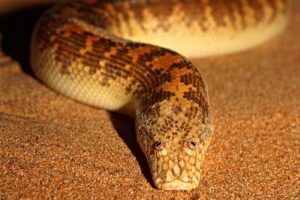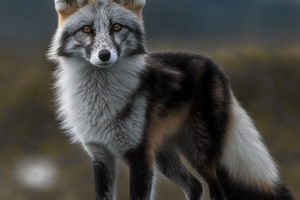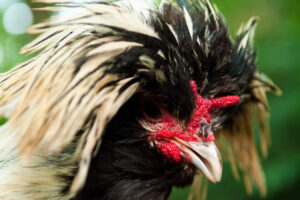Wasps belong to the wasp family, which in Latin is called Vespidae. There are about 5,000 species in total. Four species have been found in Hérland, but for the sake of simplicity, we will focus mainly on the wasp.
Wasp species are quite diverse and here we take the giant wasp for comparison. He cannot be found in Iceland, at least not yet – and fortunately. Namely, the giant wasp is much larger than normal wasps and their stings cause more pain.
Wasps are omnivorous insects and it varies depending on the species whether they stay together in colonies or on their own. The burrowing wasp forms a wasp colony.
Here we discuss the wasp Vespula Vulgaris and the giant wasp Vespa Crabro , which Icelanders can expect to encounter during trips to Europe, where it is common.
1. What do wasps look like?
2. Where do wasps live?
3. What do wasps eat?
4. How dangerous are wasps?
WHAT DO WASPS LOOK LIKE?
Common burrowing wasps
Common wasps are exactly the type we commonly call wasps when we see them buzzing in the summer air.
These wasps are characterized by distinctive yellow and black stripes that alert the insectivores to the danger of travel.
The wasps have six legs, two wings and large, black eyes. The back is striped, and the face of Vespula Vulgaris has a distinctive black spot that looks like an inverted anchor.
On the back of the abdomen is a poisonous sting that the animal uses to kill other insects. Unlike bees, wasps do not lose their sting when they sting. They live on and can sting again and again.
A normal wasp is 10-19 millimeters long and therefore not a very large insect.
The colors of the wasp clearly indicate to other predators that it is not worth putting this poisonous insect in their mouths.
Hole wasp
- Latin name: Vespula Vulgaris .
- Characteristics: Yellow and black stripes on the back and an anchor-like spot between the eyes.
- Duration: 10-19. millimeters.
- In process: May to September.
- Lifespan: The males live for a few days and die after mating. Worker wasps live for a few weeks, but the queen survives the winter and thus for a whole year.
The giant wasp
Giant wasp, Vespa crabro , is the largest wasp species in Europe.
The queen can reach three and a half centimeters in length. The species is said to be much larger than normal wasps.
Giant wasps belong to the Vespa family, but species of that family are all large. These wasps originated in Southeast Asia but are now widespread in Europe.
In addition to the difference in size, you can tell a giant wasp from a normal wasp by the colors.
The giant wasp, Vespa Crabro, has a more reddish hue than the wasp, Vespula Vulgaris. In particular, the back of the head and the front of the hind abdomen are red rather than yellow.
A giant wasp’s wings are also much more reddish-brown than a normal wasp’s.
A giant wasp can be recognized by its size and reddish color.
Giant wasp
- Latin name: Vespa Crabro .
- Characteristics: The forewing and the front part of the hindwing are reddish.
- Length: 18-24 millimeters. The queen will be up to 35 millimeters.
- In process: May to September.
- Life cycle: Males and worker wasps die in the fall, but the queen lives through the winter and thus for a whole year.
Both pit wasps and giant wasps can sting people with their venomous stingers if they feel threatened.
The pit wasp is more aggressive, but nevertheless there is more reason to fear the sting of a giant wasp.
The giant wasp injects more venom and its stings are much more painful than the sting of a normal wasp back home in Iceland.
Wasp stings are painful, but the consequences are not serious in most cases.
You will find more about the symptoms and when it might be right to call 112 later in the article.
WHERE DO WASPS LIVE?
The two species discussed here are both social and form wasp colonies that are built during the spring and summer.
Burrowing wasps often build their dens underground or in hollow trees or out in the open, and giant wasps use similar methods. The most important thing is to have shelter from rain and predators and to have access to wood.
A wasp’s nest is actually made of gnawed wood that is mixed with saliva and then becomes a kind of paper pulp that is formed into a chamber.
In the beginning, the queen builds a small farm alone and lays eggs in it, which hatch into worker wasps that help her expand the farm.
In the spring, the queen’s most important task is to raise as many worker wasps as possible, but as the summer progresses, it’s time for the generation change.
The queen now begins to mature new queens and males to fertilize them. Fertilized queens spend the winter somewhere out of the reach of frost.
The rest of the farm’s wasps are killed in the fall, and the responsibility for new wasp colonies next summer rests entirely on the fertilized queens.
WHAT DO WASPS EAT?
Wasps are predators
Unlike honey bees that suck flower sap, wasps are predators. They feed their larvae on protein-rich insect meat. They kill the insects with their poisonous sting.
Once the prey has been brought home to the farm, it is carefully chewed before the larvae get the meat. Instead of this protein-rich food, the larvae regurgitate a sugary liquid that the adult wasps eat.
In the summer, the wasps thus feed their larvae on meat so that they become large and powerful wasps. And they may attack your hot dogs.
In late summer, adult wasps also feast on sweet things such as juice, fruit and jam, which gives them fuel for their wing movements.
Normal wasps can be quite stubborn in this regard, but the giant wasp much less so.
HOW DANGEROUS ARE WASPS?
Wasps aren’t really dangerous as long as you don’t force them into close quarters. It can even be said that it is good to have them indoors because they keep various pests down, such as the larvae of other insects.
But they do have to attack if they think the farm is threatened. Lars Vilhelmsen, an entomologist at the Natural History Museum in Denmark, says:
“Wasps are predators, so they use their venom primarily to paralyze their prey. But they can also use their venomous sting to defend themselves, and they do that especially if you get too close to the wasp nest.”
And it is especially at a certain time of the year that you have to be careful in that regard.
“The latter part of summer is a sensitive time for the wasps. Then they have to produce new queens and males that lay the foundation for the next generation. The whole summer has been spent preparing this. The wasps are therefore particularly fit at this time,” he explains.
If a person is stung by a wasp, the species matters.
The giant wasps out in Europe inject more venom than normal wasps and the sting of a giant wasp causes more pain. On the other hand, it is less common for giant wasps to sting people.
Wasps defend themselves in groups
To protect themselves from invading enemies, such as hungry birds or people who want to get rid of the wasp colony, the wasps have a dangerous weapon: the poison stinger.
If you approach a colony of wasps, many of the wasps may attack together. Therefore, one should never attempt to remove a wasp colony without protective equipment.
“Like other social insects, wasps release warning pheromones when they feel threatened. At that they get very excited and others are quick to come to their aid and counterattack,” says Lars Vilhelmsen.
Wasps can also start stinging people who are sitting on a snack and they are especially aggressive in late summer when the wasp colony is in disarray and the wasps are looking for sweets to get energy.
How do you avoid getting stung?
Wasps don’t sting for a reason. The best way to avoid being stung is therefore to simply stay away from the wasp.
Wasps are not particularly interested in you, but perhaps in what you have in front of you on the table.
Therefore, keep lids on containers with sweets or sweet drinks to make sure that a wasp does not hide there. When a wasp approaches, do not attack it at all, but just wait calmly for it to fly away.
Wasps can also hide in the grass, which is why being outdoors with bare feet can be harmful.
What to do if you get stung?
If a wasp stings you, you can expect these symptoms:
*Local pain.
* Inflammation.
* Itching and redness around the puncture wound.
These symptoms disappear on their own and the vast majority of people do not experience any other symptoms.
But some people are allergic to wasp venom, just like bee stings. If so, it is necessary to act.
Lars Vilhelmsen says that wasp allergies are extremely rare: “In the sting wound, there is a mixture of toxins, including hormones and neurotoxins, which can cause an allergic reaction. The allergic reaction is caused by an overactive response of the immune system and can cause shock and a very rapid heartbeat. This can be fatal, but it is extremely rare.”
If the swelling spreads from the injection site, or if a person experiences headache and dizziness and vomiting, these are signs of an allergic reaction.
These symptoms appear a few minutes after the injection, and then people should call 112 . And if you get a sting in your mouth or throat, you should also contact a doctor immediately.
The doctor treats the allergic reaction with an antihistamine.
















